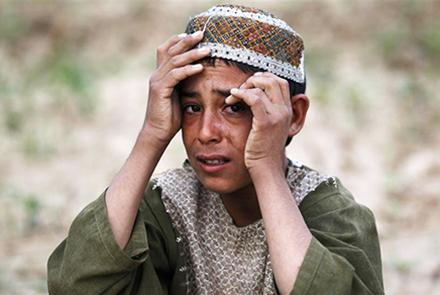Asked ‘how are you’ and the reply was ‘I am wonderful’. I asked ‘how are you deep inside’ and the reply was ‘I am bleeding inside’.
This was the day of the recent massacre of civilian life and hope in central Kabul just over the horizon of a few weeks ago. The bodies have been buried, the nights are now expected to be empty, absent from the hope that loved ones will be returning home to rest. Their rest is elsewhere.
And the torment, the torture, and the trauma are living through the collective experience of bearing witness and embodying war. My friend says, when I say ‘it is okay not to be okay sometimes’, that he does not want ‘fight with Allah’. Our suffering is our test, is it not?
Yet, the test of war for Afghanistan, entire generations and legacies woven through conflict upon conflict, is an act of torture. Deliberate, calculated, and de-humanised. Lives are being taken; targeted based of identity and the sheer act of living a daily free life is punished.
There is no immunity from war. Civilians, journalists, humanitarian and health care professionals are on the frontline of seeing bodies twisted into corpses.
The collective experience of impending death is an overlooked aspect of the lived experience of war.
Psychologists and psychiatrists typically treat people who are recovering from war. In a country like Afghanistan that has a near to non-existent mental health infrastructure, there is little chance to receive trauma therapeutic treatment during the time of trauma. Trauma ends up being a retrospective experience.
In turn, what is the meaning of suffering in Afghan society? Can we transport Western models of trauma therapy and treatment to the context of Afghanistan, developed by researchers and practitioners in populations that have not been affected by chronic conflict?
The concept of suffering is all too apparent, but trauma is an artificial construct describing a medicalised version of what happens when our sense and trust in the world around us is ruptured or destroyed.
The phenomenon of war is of the land but also beyond the land. Rarely do I hear Kabul referred to without the endearments of ‘grana Kabul Jan’. The land is personified, the body of home and history. For the Afghan refugee diaspora around the globe, the land is even more poignant. Every attack fractures the soil further, takes away buildings that reminded people of their childhoods or that stood bold in their memories of home that they carry to remember.
On a visceral level, war is felt; the time that travels between traumatic events is un-felt, un-seen and un-heard. Instead, war finds its way into every pore of the senses and is carried by the body. The body is the land and the body breaks every-time the land is shattered. As the exhaustion and fatigue from destruction and death is exhaled, the sigh is shared amongst those near and far. The trauma is an intricate web that binds those within it until its patterns turn to chaos.
The trauma that is lived has no face. It remains hidden but ever present in nightmares and the flashes of recurrent memories.
War is the antithesis of creation. All what war reveals has no natural bearing on the flourishing of human life from birth unto death. The impact of war on living is intolerable and incompatible with life.
The expectation to talk about trauma, then, is absurd for it is absurdity that war captures. Yet, the presence of war is a landscape of trauma and is lived both privately and shared.
Wounds that are bleeding words that are beyond comprehension leave behind an invisible blood. There is no time to bleed. Life does not stop; life must be lived. And the suffering is buried deeper and deeper into a grave that is never left, but carried within.
How can war – the landscape of trauma – be reflected on especially when it needs to be translated into distant languages and become a foreign story?
We need new words. New words to capture expressions of suffering through unimaginable experiences. Spaces to share suffering as story-tellers.
Living in war is a dangerous relationship between life and death. The only anecdote and healing from war’s landscape of trauma, ultimately, is peace.
Dr Ayesha Ahmad is an academic specializing in mental health, culture, and psychological trauma and is a lecturer in Medical Ethics and Law at St Georges University of London and an Honorary Lecturer at the Institute for Global Health, University College London.
Twitter: @AcademicAyesha

